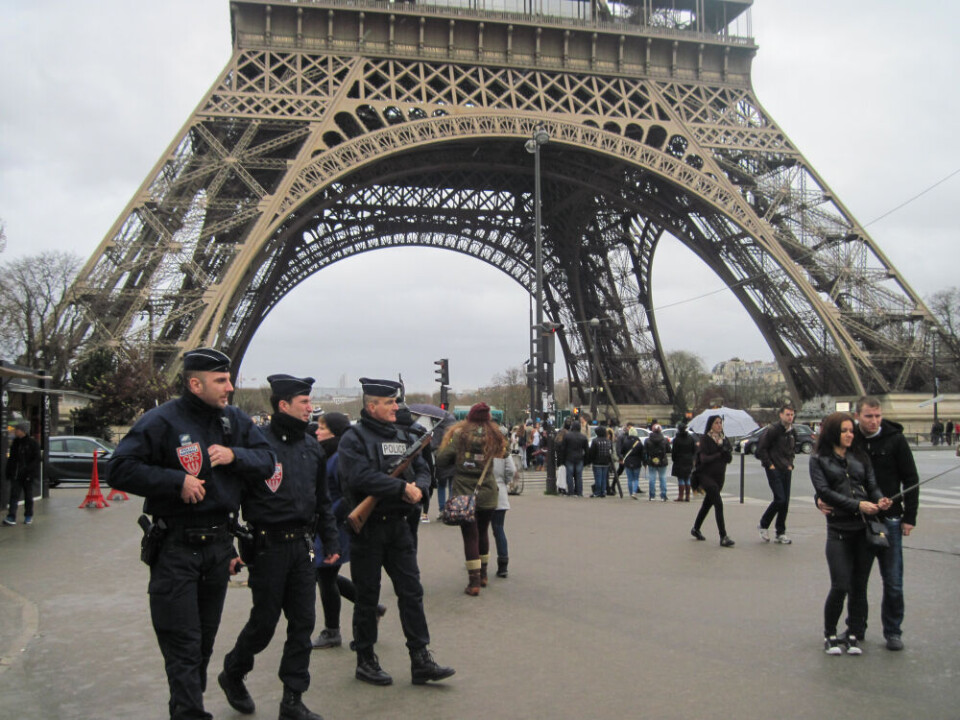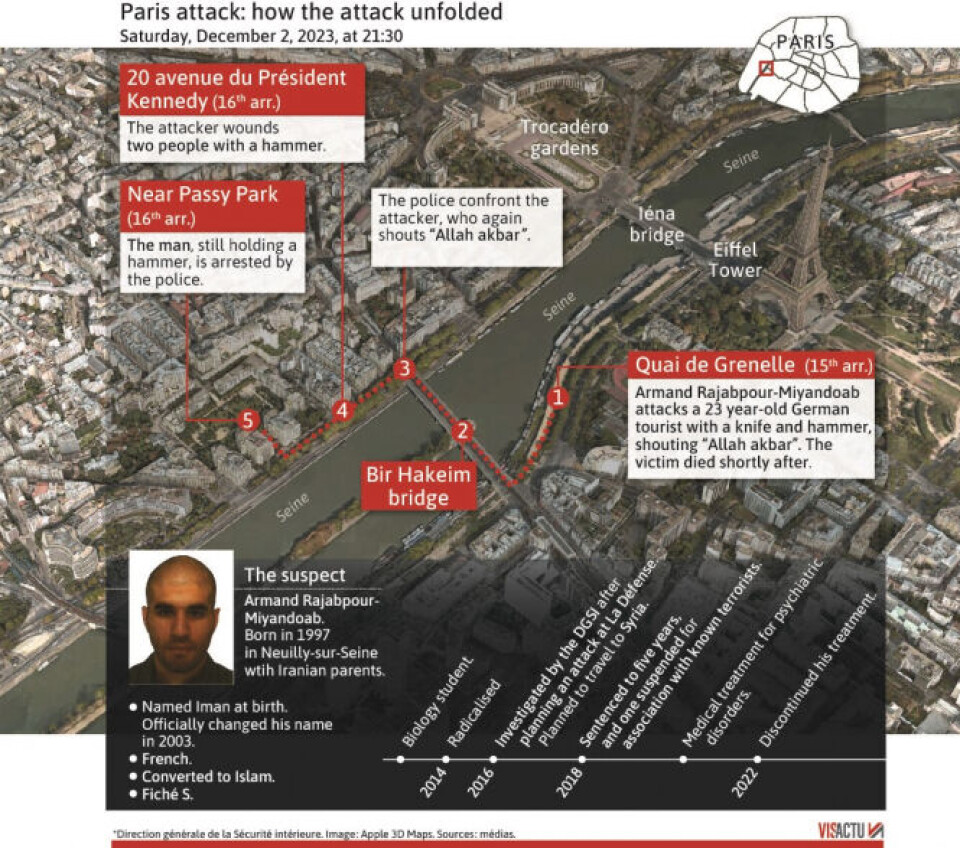-
Five departments on orange alert as heavy rain and floods continue in south of France
Conditions are expected to worsen through the afternoon
-
‘I saw flames’: Air France plane makes emergency landing in Lyon after technical fault
Flight carrying 173 passengers to Ajaccio diverted to Lyon-Saint-Exupéry on Saturday
-
Farmers’ protests ease but key motorway blockades hold firm in south-west France
Pressure on the government over its handling of cattle culls continues as Christmas nears despite a drop in protests
How did the Paris terrorist attack on November 2 happen?
One person was killed and two more were injured by a man armed with a knife and a hammer

Here is what we know so far about the terrorist attack in Paris on November 2:
On Saturday evening, 26 year-old Armand Rajabpour-Miyandoab, a Franco-Iranian former biology student released a video announcing his intention to commit a terrorist attack.
Minutes later, Rajabpour-Miyandoab, appeared near the Eiffel Tower armed with a hammer and a knife.
At around 21:00 he stabbed a German tourist and immediately fled the scene. The victim, a 24-year-old nurse born in the Philippines, died of his wounds.
Rajabpour-Miyandoab then crossed to the north side of the Seine via the Bir Hakeim bridge.
He was then briefly confronted by police, whom he evaded, shouting “Allah akbar”. BFMTV reports that he told the police he was wearing an explosive vest.
He then attacked two more people: a 66-year-old British tourist, who was struck around the eye with a hammer-like object, and a 60-year-old French man.
Both have since been discharged from hospital.
Rajabpour-Miyandoab was then tasered by the police and taken into custody.

The perpetrator was known to the police and security services, but his complex psychiatric profile “made surveillance more difficult”, said the Prefect of Paris police Laurent Nuñez.
Read more:
Paris tourist murder: knife attacker had been under surveillance
What is the level of risk of a terrorist attack in France now?
























